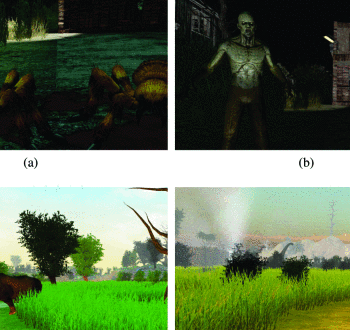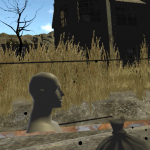Empathy in Virtual Reality
Virtual reality (VR) interfaces is an influential medium to trigger emotional changes in humans. However, there is little research on making users of VR interfaces aware of their own and in collaborative interfaces, one another’s emotional state.
In this project, through a series of system development and user evaluations, we are investigating how physiological data such as heart rate, galvanic skin response, pupil dilation, and EEG can be used as a medium to communicate emotional states either to self (single user interfaces) or the collaborator (collaborative interfaces). The overarching goal is to make VR environments more empathetic and collaborators more aware of each other’s emotional state.
Project Video(s):Publications
-

Sharing Manipulated Heart Rate Feedback in Collaborative Virtual Environments
Arindam Dey ; Hao Chen ; Ashkan Hayati ; Mark Billinghurst ; Robert W. Lindeman@inproceedings{dey2019sharing,
title={Sharing Manipulated Heart Rate Feedback in Collaborative Virtual Environments},
author={Dey, Arindam and Chen, Hao and Hayati, Ashkan and Billinghurst, Mark and Lindeman, Robert W},
booktitle={2019 IEEE International Symposium on Mixed and Augmented Reality (ISMAR)},
pages={248--257},
year={2019},
organization={IEEE}
}We have explored the effects of sharing manipulated heart rate feedback in collaborative virtual environments. In our study, we created two types of different virtual environments (active and passive) with different levels of interactions and provided three levels of manipulated heart rate feedback (decreased, unchanged, and increased). We measured the effects of manipulated feedback on Social Presence, affect, physical heart rate, and overall experience. We noticed a significant effect of the manipulated heart rate feedback in affecting scariness and nervousness. The perception of the collaborator's valance and arousal was also affected where increased heart rate feedback perceived as a higher valance and lower arousal. Increased heart rate feedback decreased the real heart rate. The type of virtual environments had a significant effect on social presence, heart rate, and affect where the active environment had better performances across these measurements. We discuss the implications of this and directions for future research.







